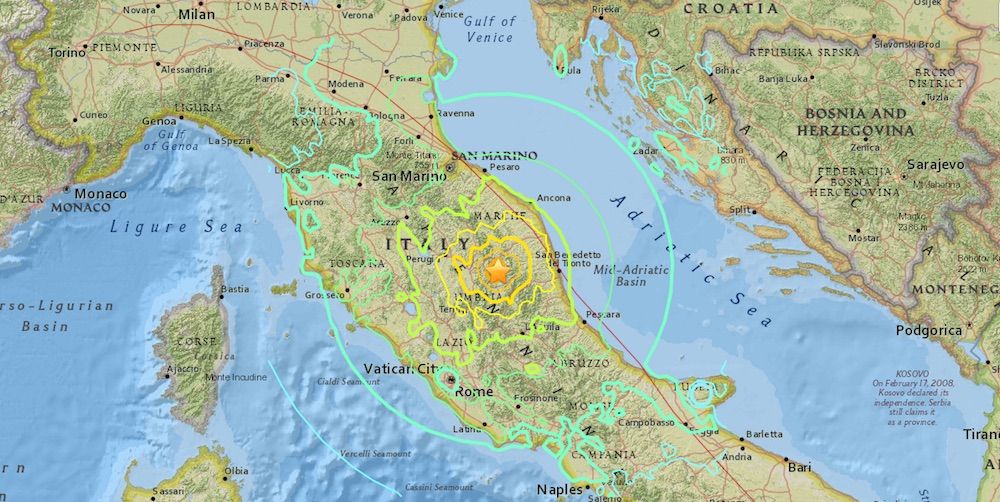
Two strong earthquakes just two hours apart rattled central Italy today, and the temblors were felt as far south as Rome.
A 5.5-magnitude quake struck roughly 6 miles (9 kilometers) southeast of the town of Norcia at around 10 a.m. local time. Just 2 hours later, a larger, magnitude-6.1 quake struck about 11 miles (18 km) from the medieval town and just 1.6 miles (2 km) from the smaller town of Visso.
Norcia has seen its share of shaking in recent months. In August, the same region was struck by a magnitude-6.2 quake that left hundreds of people dead as medieval-era stone buildings collapsed, according to CNN. [Photos of This Millennium's Most Destructive Earthquakes]
The region is so earthquake-prone because of the complex geology underlying the ground in the region. Central Italy sits atop the Tyrrhenian basin, a region beneath the Mediterranean Sea where the earth is spreading apart, Julie Dutton, a geophysicist with the U.S. Geological Survey, previously told Live Science.
In northern Italy, the slow-motion crash of the Eurasian and African plates has forged the Alps, but this collision zone is migrating southeast, which stretches the crust that sits beneath the Mediterranean, she said. The ground extension occurs perpendicular to the Alps.
As a result, this region of central Italy is no stranger to the ground shaking. For instance, in 2009, a magnitude-6.3 earthquake struck L'Aquila. Records dating to the 1300s also record horrific quakes that occurred fairly regularly in the towns dotting the Alps. Some were so severe that whole towns were abandoned, the records reveal.
Original article on Live Science.
Sign up for the Live Science daily newsletter now
Get the world’s most fascinating discoveries delivered straight to your inbox.

Tia is the managing editor and was previously a senior writer for Live Science. Her work has appeared in Scientific American, Wired.com and other outlets. She holds a master's degree in bioengineering from the University of Washington, a graduate certificate in science writing from UC Santa Cruz and a bachelor's degree in mechanical engineering from the University of Texas at Austin. Tia was part of a team at the Milwaukee Journal Sentinel that published the Empty Cradles series on preterm births, which won multiple awards, including the 2012 Casey Medal for Meritorious Journalism.
